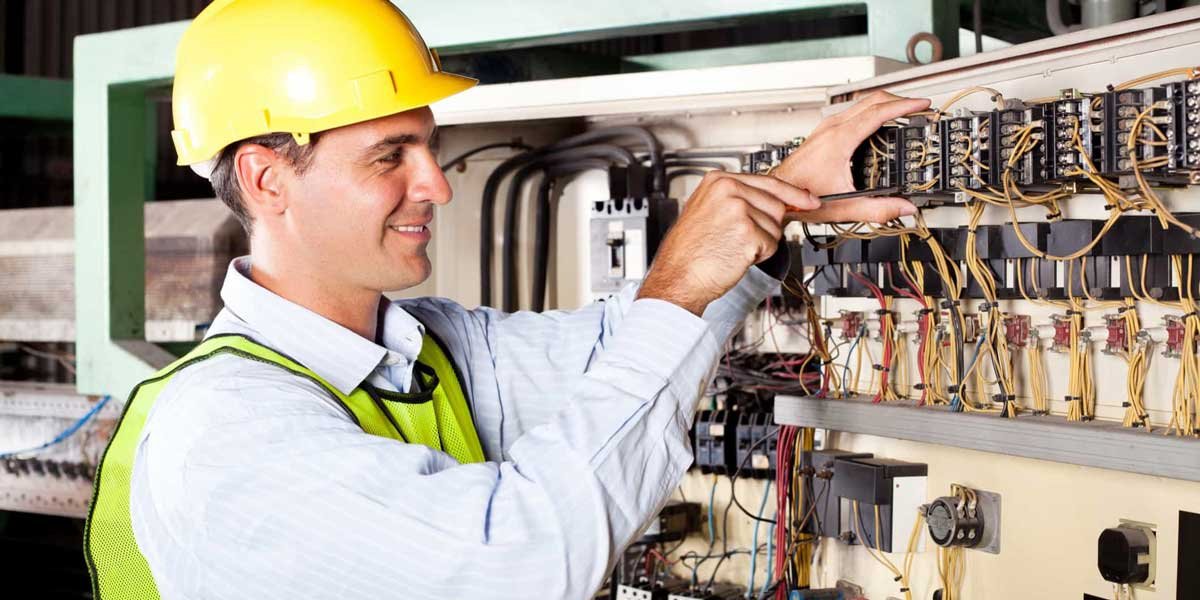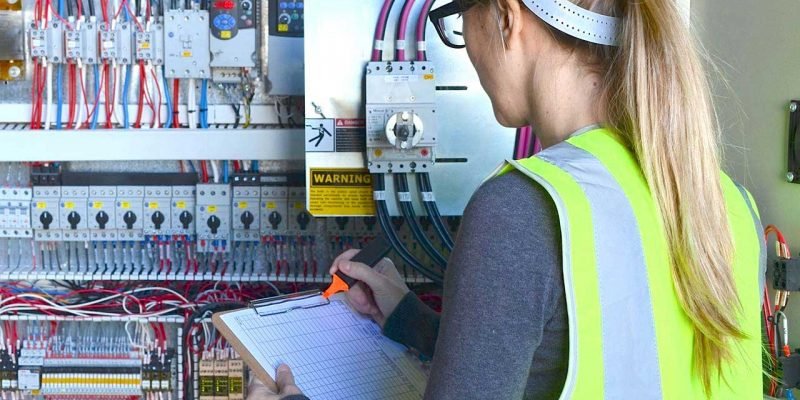The techniques and skills electricians need to master are as detailed and specific as the responsibilities they handle.
The duties and responsibilities of an electrician in Craigie are wide-ranging and include
- Testing, repairing, and maintaining electrical equipment
- Installing electrical systems and components
- Preventing potential electrical hazards
- Reading mechanical, electrical, and architectural drawings, diagrams or specifications and determine job requirements.
- Planning the wiring system layout
- Must know pat testing acceptable readings
- Identifying and repairing electrical malfunctions
- Installing electronic/electrical control systems as well as insulated cables
- Installing electrical equipment and appliances such as switchboards, electrical signs, water heaters, and storage heaters
- Connecting/installing power outlets, circuit breakers, switches, lighting, conduits, ladder racks, emergency lighting, and cable trays
- Assembling electronic and electrical components required for jobs
- Maintaining automated production
- Installing data and voice cabling
Apart from being good in maths and having a mechanical aptitude, every electrician needs to also have these skills;
- Attention to detail
- hand-eye coordination
- Good eyesight
- normal colour vision
- Logical thinking
- diagnostic ability
- Work independently and in a team
- Good communication skills
- Physical fitness
- Accurate report writing
- inventory detailing
However, there are five basic techniques that every electrician must have to perform their duties safely and effectively.
Five crucial techniques every electrician must master

#1: Knowledge of safety standards and codes of practice
To qualify as an electrician in Australia, an individual needs to successfully complete Certificate III course in Electrotechnology Electrician apart from having completed Year 10 that includes Maths. In addition, the Australian Apprenticeship, which is a four-year program must also be completed. Apart from an electrical license, most states in Australia also mandate electricians to be R.E.C. (Registered Electrical Contractors) before becoming electrical contractors or undertaking electrical work.
Electricians are required to issue electrical compliance certificates for the work they perform. The certificate indicates that the carried out work is fully compliant with the territory or state’s applicable electrical legislation and Wiring Rules (Australian Standard AS/NZS 3000:2007) and has been tested and approved.
Every electrician must know the safety standards and legal framework pertaining to electrical systems and components that include national and applicable state/territorial regulations.
The Electrical Safety Act of 2002 enforces electrical safety and aims to prevent injuries, deaths, and property damage from electrical accidents. Apart from specifying standards, duty, structure and systems for enhancing electrical safety, the act also specifies the legal consequences of non-compliance. Electricians need to also comply with many other local and national electrical regulations and standards.
For instance, in Queensland, in addition to the Electrical Safety Act of 2002, the legal framework for electrical safety includes the Electrical Safety Regulation of 2013 and codes of practice.
These codes and standards get amended and updated from time to time. Electricians need to keep themselves updated on these changes and stay current with respect to electrical safety regulations and standards.
#2: Not mixing electricity and water
Every electrician knows the dangers of exposing electrical equipment to any amount of water. This is because water promotes the conduction of electricity. Water contains salts such as magnesium sulfate (epsom salt) and sodium chloride (table salt), which have charged ions that turn water into an electrolyte. While these ions are neutral as they have an equal number of negative and positive ions, when an electric voltage is introduced, the ions get charged and create a current.
Electrolytes conduct small currents as well as large currents. When a puddle, stream or pool is hit by lightning, the water gets charged with high voltage of lethal electricity. Dropping a hairdryer into a bathtub will also have a similar effect as long as the dryer is plugged in.
As electricians work with electricity, power outlets and electrical systems, an important technique they should have is to not handle an electrical circuit/ outlet with wet hands, when perspiring or when they are on a wet floor.
Keeping all electrical appliances / tools away from water is important to avoid accidents and injury at worksites.
#3: Regular inspection and testing
Regular inspection and testing of electrical equipment are one of the most crucial techniques that electricians must master. This helps in identifying electrical faults, wear, and other damage which saves lives and prevents injuries.
While thorough examination can help in identifying any electrical problems such as damaged cable or cords, regular testing ensures the detection of faults or deterioration in electrical systems that are not visible.
Suppose the electrician is also the owner of the business. In that case, they are responsible for ensuring the electrical equipment is not exposed to hostile environmental conditions such as vibration, heat, moisture, corrosive chemicals, mechanical damage or dust. These conditions can damage the electrical equipment or components, increasing the risk of their failure.
Safe Work Australia recommends testing electrical equipment once in a year when used in such hostile operating environments. The manufacturer’s standards and testing guidelines are available on Safe Work Australia’s website.
#4: Wear protective clothing
An important safety technique electricians must acquire is to use the appropriate protective clothing that covers the legs to the footwear and arms down to the wrists.
This protects against flash burns, electric shock, flying objects and electric arcing. Apart from this, electricians need safety helmets, safety footwear that are non-conductive and feature a steel toe cap as well as safety glasses, shields and gloves.
#5: Handle emergencies
While improving their skills in assessing risks related to electrically hazardous situations, electricians need to know what to do in case of an emergency. Electrical workers are at risk of being exposed to high voltage of electricity that is strong enough to lead to cardiac arrest.
Advanced training in CPR as well as procedures for low-voltage rescue are crucial techniques electricians must acquire.
Staying protected with public liability insurance
Apart from mastering various skills and techniques, electricians need to be also aware of the risks of bodily injury and property damage that their clients and general public are exposed to. Tripping over a wire, electrical equipment or a faulty wiring that causes shocks can all trigger lawsuits. Defending yourself against the lawsuit and paying the settlement if you are found to be negligent can severely impact your business’ financial health.
A public liability insurance is designed to protect electricians against these risks that arise as a result of their professional activities.







Comments